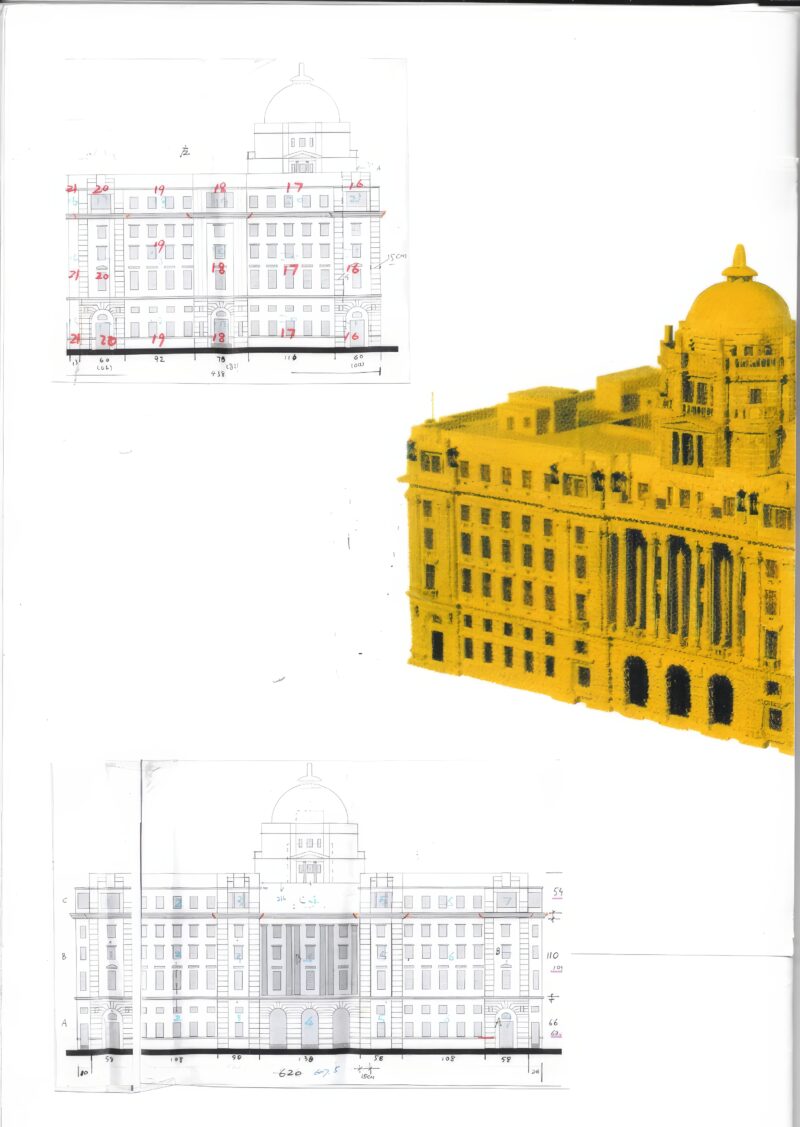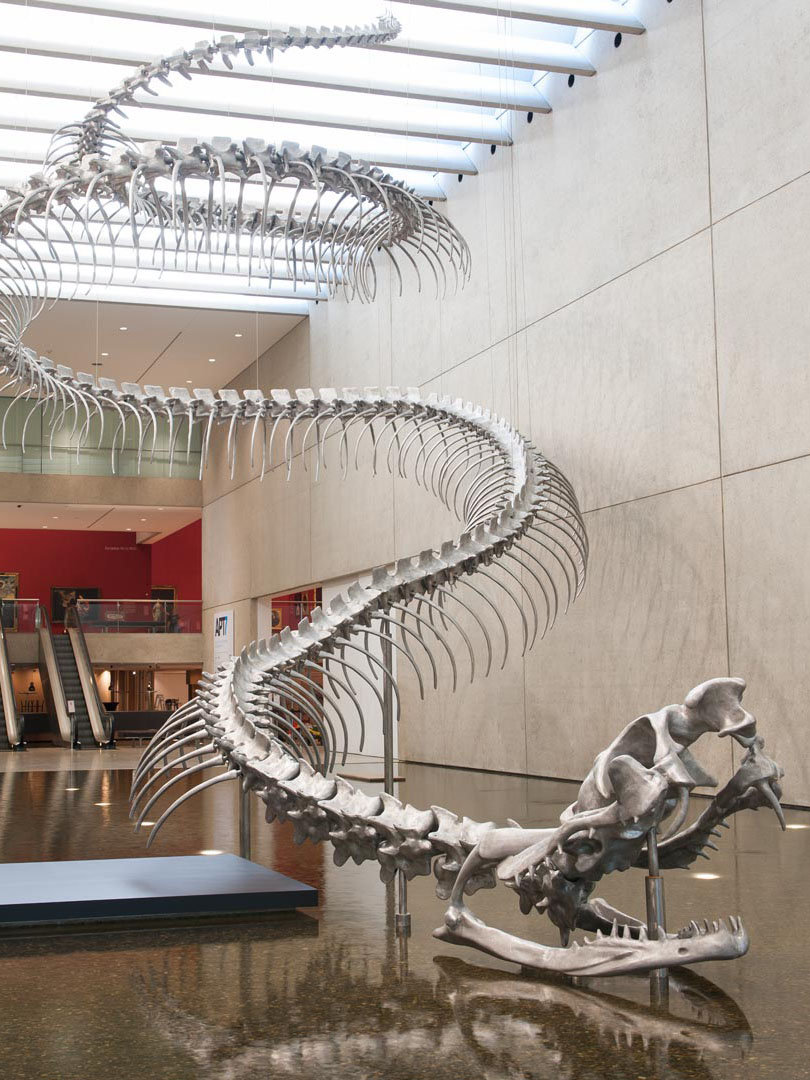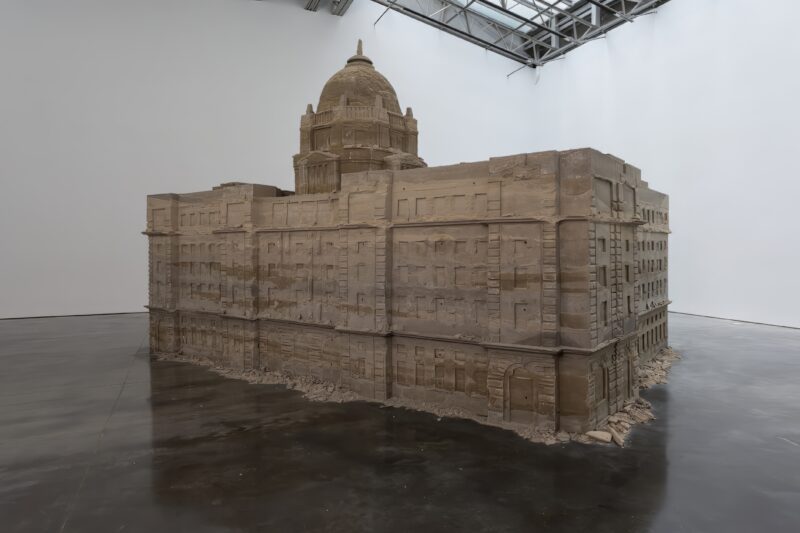
Introduction
In 2018, Gladstone Gallery 1 in New York 2 presented a rare spectacle of art; Bank of Sand, Sand of Bank. A thought-provoking artwork, from renown Chinese 3 artist Huang Yong Ping 4.
Bank of Sand, Sand of Bank is a monumental piece, stretching 6 meters in length, 4.3 meters in width, and standing 3.5 meters tall. Modeled after the former HSBC Building in Shanghai, the artwork is crafted primarily from dry sand, mixed sparingly with cement, resulting in a fragile and temporary structure that captures the viewer’s attention with its intricate details and imposing size.
Background
First presented in 2000 at the Shanghai 5 Biennale, the artwork portrayed a metaphorical representation of the gigantic HSBC building in Shanghai, China. The neoclassical HSBC Building, located on Shanghai’s historic Bund, was constructed in 1923 and quickly became a symbol of Western influence in the Far East. Designed by the British architectural firm Palmer & Turner and built by British contractor Trollope & Colls, it was once the largest bank building in the region.
Over the years, the building has witnessed Shanghai’s tumultuous history, from the height of colonial influence to its transformation under the Chinese government until the 1990s, when it became the headquarters of Pudong Development Bank and is viewed as a crucial landmark in Shanghai.
During the creation of Bank of Sand, Sand of Bank for its exhibition at the Shanghai Art Museum, an intriguing logistical challenge arose. A construction team from a nearby building was enlisted to transport a staggering 25 tonnes of sand to the museum. Given the magnitude of this task and the potential disruptions it could cause, the transportation was carried out exclusively at night. This nocturnal operation, spanning two nights, showcased not only the unique challenges associated with the artwork’s creation but also the collaborative spirit and dedication behind bringing Huang’s vision to life.

Bank of Sand, Sand of Bank, 2008
Huang’s 20-ton repro of the complex is a concept detailing the troubles, history, and value of the building. The replica consists of dry sand and concrete, supported by wooden molds, and a hat lampshade. But Huang only added a little water and cement to the structure, leaving it vulnerable and disintegrating. The sand denoted money and the desire of society to amass it. However, the bank’s role as a fulcrum of the society’s hopes and aspirations becomes questionable for its instability. Thus, the crumbling design concept.
Huang designed the repro to mark China’s shifting political and economic realities in early 2000. According to him, the concept and all aspects of the replica had contextual meaning. While the fragility of the artwork denoted the end of a political and economic era, the hidden lampshade represented the 1940s end of colonialism.
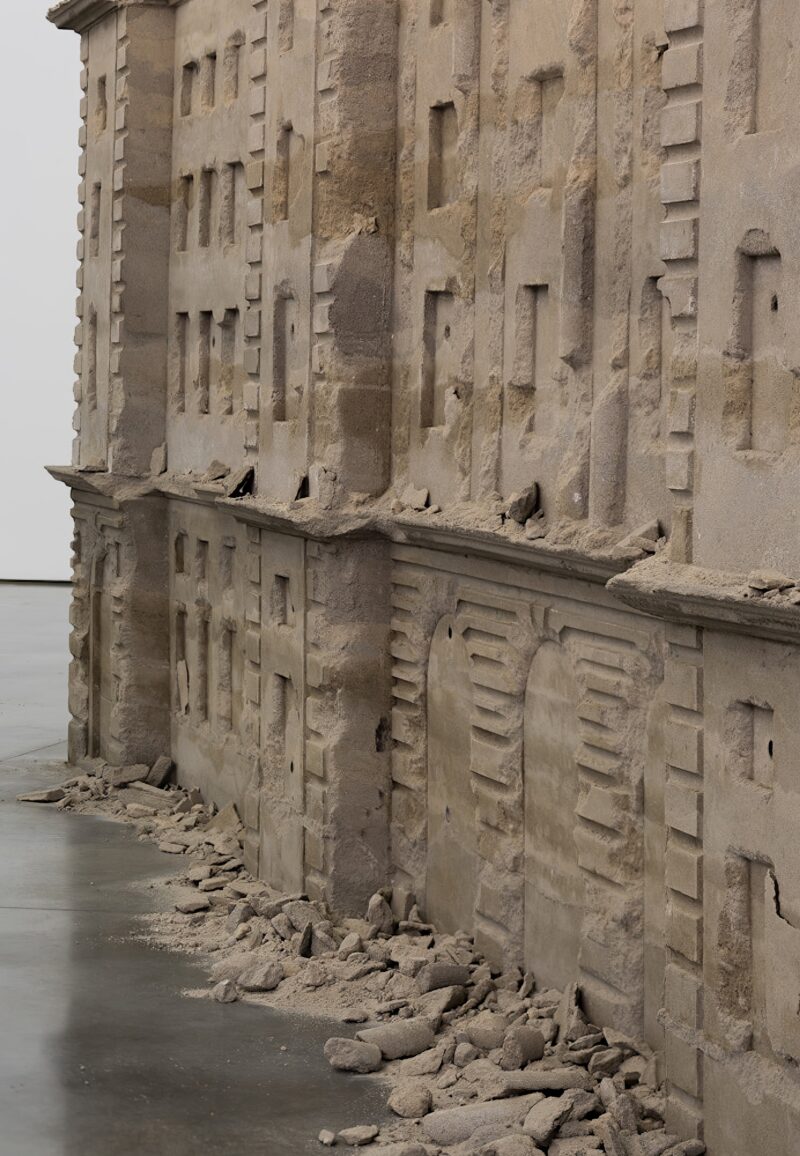
The hut is also a symbol of change, and the central aspect highlights the evolution of the nation. While the colonialists loved it as a traditional piece, people now use it to turn around their looks. Meanwhile, the use of the bank in the artwork had several symbolic representations, for it linked colonialism and capitalism and acted as the foundation for the revival of the economy.
Legacy of the HSBC Edifice
There is also a relationship between HSBC Bank and the sand masterpiece, the bank and the sand, and the presentation in New York. Huang’s detailed contemplation of every single detail is mind-boggling. HSBC is featured in the design to highlight the history of Shanghai from the colonial era. It’s the only significant building with a rich and great story dating back to the start of colonialism. To the British, the building was a darling, and they embraced it for its uniqueness until the Chinese Government took over.
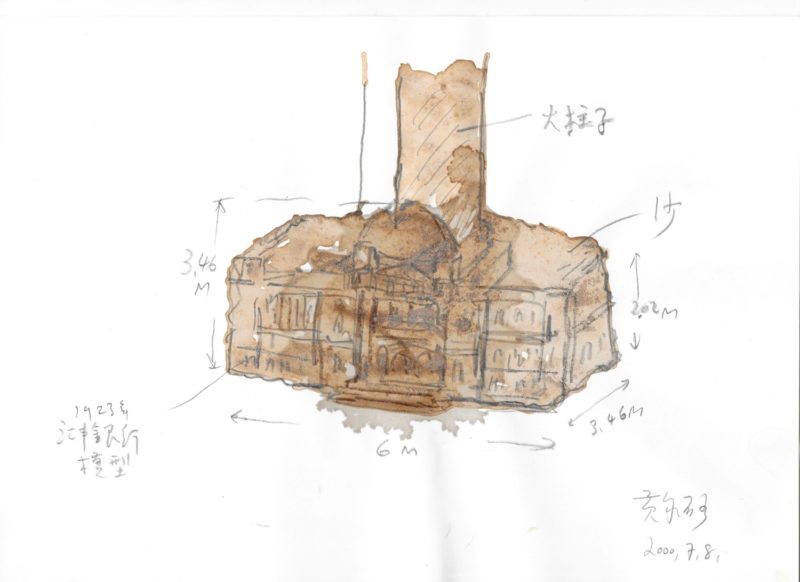
Analysis
Huang Yong Ping’s Bank of Sand, Sand of Bank was not merely a spontaneous creation but a deeply introspective reflection on the changing socio-economic landscape of China in the early 2000s. As the Shanghai Biennale shifted its lens towards international contemporary art, Huang’s artwork emerged as a poignant commentary on China’s burgeoning economy, symbolizing the nation’s aspirations and challenges in the global arena.
The use of sand, a material known for its impermanence juxtaposed with the solid and enduring image of a bank, challenges the viewer to reflect on the transient nature of economic power and societal values. The very idea of constructing a bank—a symbol of stability and permanence—from sand, known for its transience, challenges conventional notions of economic security. Huang’s artwork, through its fragility, prompts viewers to question the durability of financial institutions and the fleeting nature of wealth in a dynamic global economy.
New York exhibition
Between 28 April and 9 June 2018, New York’s Gladstone Gallery showcased one of Huang Yong Ping’s iconic creations, Bank of Sand, Sand of Bank, where it took on new layers of meaning. Originally commissioned for the 2000 Shanghai Biennale, this artwork was reintroduced to art enthusiasts and critics in the heart of New York’s vibrant art scene. New York’s presentation was not a coincidence but pre-planned.
With New York being the center of global capitalism and a representation of Western ideals, there was no better place for a Western launch. The city provided a contrasting backdrop to the artwork’s original context in Shanghai. Amidst the intensifying Sino-American trade tensions, the artwork’s presence in New York prompted viewers to reflect on the parallels and divergences between China’s economic journey and the established capitalist structures of the West.
Final words
The construction of Bank of Sand, Sand of Bank is a testament to Huang’s meticulous attention to detail and his innovative approach to materials. The artwork consists of wooden molds on its four sides, held together by long screws. Dry sand, mixed with a minimal amount of concrete, is then watered and consolidated within these molds. Once dried, the structure retains its shape but remains vulnerable, with the potential to disintegrate or collapse, adding to its conceptual depth.
Alongside Bank of Sand, Sand of Bank, Huang introduced another significant artwork titled Hat Lampshade. This piece, inspired by a hexagon-shaped lampshade in the Shanghai Art Museum, resonated with historical undertones, especially echoing the hats popular among European colonialists between 1850 and 1940. Together, these artworks painted a vivid picture of Shanghai’s colonial past and its evolving identity in the modern world.
Bank of Sand, Sand of Bank, was the fifth presentation of Huang’s works in the Gladstone gallery. He presented “Magiciens de la Terre” at Centre Georges Pompidou in Paris, 1989. After immigrating to France, he featured in the 1999 Venice Biennale 6 representing France. Despite migrating, people in China still respect him for his creations early in his life.
